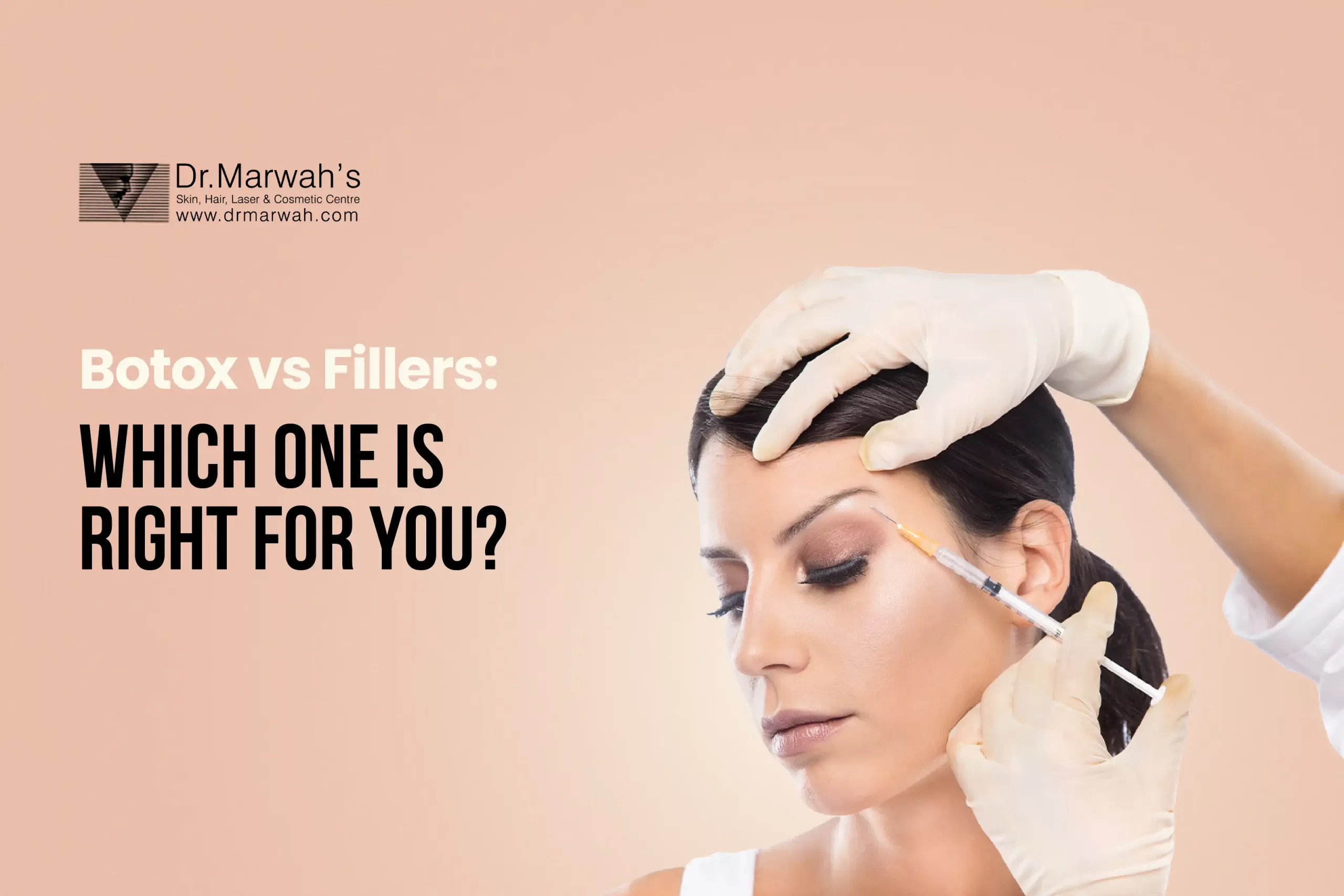When your skin starts telling stories you didn’t sign up for, dark patches, uneven tones, or stubborn spots, then it’s time to listen.
Skin pigmentation issues are more than just cosmetic concerns; they can affect confidence, emotional well-being, and how we present ourselves to the world. For instance, you woke up one morning, looked in the mirror, and noticed a patch that wasn’t there yesterday? Or maybe the dark spots that once blended in have now taken center stage on your face? You’re not alone.
Whether it’s a sudden patch after a beach holiday or a lingering spot from a healed pimple, understanding skin pigmentation is the first step towards reclaiming your natural glow. Here’s the good news: pigmentation is treatable. But before you dig into treatments or creams, it’s important to understand what’s happening beneath your skin and why.
Let’s get started!
What Is Skin Pigmentation?
Skin pigmentation refers to the coloring of your skin caused by melanin, a pigment produced by specialized cells called melanocytes. This pigment is what gives your skin, eyes, and hair their color. When melanin is produced evenly, your skin tone appears uniform. But when there’s an imbalance, it leads to visible changes in skin tone, often in the form of dark or light patches.
These changes can happen anywhere on the body, but they’re most noticeable on the face, hands, neck, and other frequently exposed areas. Pigmentation can either be temporary or permanent, depending on its cause, severity, and treatment. But do you know what types they are? Let’s see.
Types of Skin Pigmentation Problems
Let’s break it down into the most common forms you might recognize:
1. Melasma
Often called the “mask of pregnancy,” melasma causes large patches of dark skin, usually on the cheeks, forehead, or upper lip. It’s triggered by hormonal changes and worsened by sun exposure.
2. Sunspots (Lentigines)
These are flat, brown spots caused by prolonged sun exposure. They’re more common as you age, especially in areas frequently exposed to sunlight like the face, hands, and shoulders.
3. Freckles
Yes, they’re a form of pigmentation! Freckles are tiny brown spots that often become more visible with sun exposure.
4. Vitiligo and Hypopigmentation
On the opposite side, hypopigmentation happens when melanin production is reduced or absent, leading to light patches on the skin. Vitiligo is a well-known autoimmune condition that causes this.
What Causes Skin Pigmentation to Develop? All You Need To Know
Pigmentation doesn’t just happen randomly. Here are the most common culprits behind those patches and spots:
1. Sun Exposure
The number one cause. UV rays stimulate melanin production. Over time, this results in sunspots and uneven skin tone. Even short, repeated exposure without sun protection can lead to pigmentation.
2. Hormonal Changes
Hormones play a big role in melasma. It’s why pregnant women, women on birth control, or those undergoing hormone therapy often notice dark patches.
3. Skin Trauma or Inflammation
Any injury or inflammation can result in post-inflammatory hyperpigmentation. The darker your skin tone, the more likely you are to develop PIH.
4. Genetics
Some people are just more prone to pigmentation due to their genes. If your parents had freckles or melasma, you might too.
5. Certain Medications
Medications such as antibiotics, chemotherapy drugs, and even some topical treatments can make your skin more sensitive to the sun and trigger pigmentation.
6. Aging
As we age, cell turnover slows down, and cumulative sun exposure catches up with us, leading to age spots or liver spots.
Debunking Common Myths About Skin Pigmentation
Pigmentation isn’t picky; it can show up on anyone’s skin, no matter the shade. Let’s bust a few myths and bring some truth to light.
Myth 1: Only Fair-Skinned People Get Pigmentation
This is simply untrue. People of all skin tones can develop pigmentation issues. In fact, individuals with darker skin are more prone to developing more noticeable pigmentation because their melanocytes (melanin-producing cells) are more active.
For darker skin types, the pigmentation may also linger longer and be more resistant to treatment. It’s crucial to understand this when choosing treatment options, as certain procedures that work well for lighter skin may not be suitable for deeper complexions.
Instead of assuming you’re safe from pigmentation because of your natural skin color, it’s better to be proactive with sun protection and gentle skincare.
Myth 2: Pigmentation Will Fade on Its Own
While some minor pigmentation may lighten over time, especially with sun protection and a healthy skin barrier, most cases require active treatment to truly fade. Waiting it out is rarely the best approach, particularly if the pigmentation is hormonal or post-inflammatory.
The longer pigmentation goes untreated, the more it tends to settle into deeper layers of the skin, making it harder to address. Early intervention can make a huge difference in treatment outcomes.
Myth 3: Natural Remedies Are Always Safe and Effective
It’s easy to fall for DIY fixes like lemon juice, turmeric, or apple cider vinegar. While they sound harmless, these home remedies can irritate the skin, cause burns, or make pigmentation worse, especially under sun exposure.
Lemon juice, for instance, can make your skin photosensitive and lead to chemical burns. Natural doesn’t always mean safe, and what works for one skin type may cause a reaction in another. Professional guidance is key, especially when dealing with sensitive skin. Safe, evidence-backed treatments are more reliable and deliver real, lasting results.
How to Diagnose the Type and Cause of Skin Pigmentation
Pigmentation issues may look similar on the surface but can have very different causes. Identifying the root cause is key to choosing the right treatment. A skin specialist may use:
- Wood’s lamp examination to view pigmentation depth.
- Dermatoscopy for a detailed look at the pigmentation pattern.
- Medical history and blood tests to check for hormonal or nutritional imbalances.
- Skin biopsy in rare or unclear cases.
Treatment Options That Actually Work: Tried, Tested, and Trusted
Once the cause and type of pigmentation are identified, there are several effective treatment options available. The best approach often combines skincare, lifestyle changes, and advanced dermatological procedures.
1. Topical Creams and Serums
These are often the first line of defense. Prescription creams containing hydroquinone are considered the gold standard for treating hyperpigmentation. Other ingredients like retinoids (tretinoin), kojic acid, azelaic acid, and tranexamic acid are also widely used.
Vitamin C is a popular over-the-counter option that helps reduce oxidative stress and lighten dark spots over time. Niacinamide is another versatile ingredient that not only helps with pigmentation but also strengthens the skin barrier.
It’s important to use these treatments consistently and as prescribed. Overuse or misuse can irritate the skin, which might worsen pigmentation.
2. Chemical Peels
Chemical peels involve the application of a chemical solution that exfoliates the top layers of skin, encouraging new skin to form. Depending on the depth of the peel—superficial, medium, or deep—the downtime and results may vary.
Milder peels with ingredients like glycolic acid or lactic acid are ideal for treating surface-level pigmentation. Deeper peels may be recommended for more stubborn cases, but they require expert supervision. Multiple sessions may be needed for best results, and post-treatment care is crucial to avoid complications or rebound pigmentation.
3. Laser Treatments
Laser treatments have become increasingly popular for treating skin pigmentation due to their precision and minimal downtime. Technologies like PicoWay® and RevLite are designed to break down excess melanin in the skin without damaging surrounding tissues.
PicoWay® delivers ultra-short pulses of energy to target pigment, making it suitable for various pigmentation issues, including melasma, freckles, and sunspots. It’s considered safer for darker skin tones compared to older laser systems.
A series of sessions may be required, and combining lasers with topical treatments often yields the best results. Choosing the right technology for your skin type is essential, which is why a consultation with a skin specialist is highly recommended.
Want to understand how laser technology treats pigmentation? Read our blog on Pigmentary Disorder by PicoWay & RevLite
4. Microneedling with Serums or PRP
Microneedling involves using tiny needles to create controlled micro-injuries in the skin, which kickstarts the skin’s natural healing process. This stimulates collagen and elastin production, key players in smoothing skin texture and reducing acne scars.
When combined with targeted serums, such as those containing Vitamin C, niacinamide, or tranexamic acid, it significantly boosts their absorption, helping fade dark spots more effectively. Alternatively, PRP (Platelet Rich Plasma), derived from your own blood, is rich in growth factors that accelerate skin regeneration. This combo not only lightens pigmentation but also enhances overall skin radiance and firmness.
5. Oral Supplements
Beauty from the inside out gets real support from oral supplements that target skin health on a cellular level. Antioxidants like glutathione help neutralize free radicals and reduce melanin production, gradually brightening skin tone.
Vitamin C supports collagen formation and enhances the effects of topical treatments. Another powerhouse, polypodium leucotomos, a natural fern extract, helps protect skin from UV damage and reduces inflammation, which can trigger hyperpigmentation.
Prevention: Your First Line of Defense
Pigmentation may not always be preventable, but you can significantly reduce the risk with a few key habits. First and foremost: sunscreen. Choose a broad-spectrum SPF 30 or higher and reapply every two hours if you’re outdoors.
Protective clothing like wide-brimmed hats, UV-blocking sunglasses, and long sleeves can shield your skin from direct sunlight. Avoid peak sun hours when UV rays are strongest, typically between 10 a.m. and 4 p.m.
A gentle skincare routine that avoids harsh scrubs, alcohol-based toners, and excessive exfoliation helps maintain your skin’s natural barrier. Keeping your skin calm and moisturized reduces inflammation and lowers the risk of developing pigmentation.
Real Talk: Why See a Dermatologist?
It might be tempting to experiment with over-the-counter solutions, but pigmentation often needs a layered and personalized approach. A board-certified dermatologist can:
a) Identify the exact type and depth of pigmentation
b) Tailor a treatment plan suited to your skin tone and sensitivity
c) Monitor your progress and make necessary adjustments
Final Thoughts: Pigmentation Isn’t a Life Sentence
Skin pigmentation can be stubborn, but it’s far from untreatable. From hormonal imbalances to sun exposure, there are many reasons why pigmentation shows up, but thankfully, there are also many ways to treat and prevent it.
Whether you’re struggling with melasma, post-acne marks, or sunspots, the first step is awareness. The next is action. With the right diagnosis and tailored treatments, your skin can get back to looking healthy, even-toned, and radiant.
At Dr. Marwah’s Clinic, we don’t believe in one-size-fits-all. Our dermatology experts use state-of-the-art diagnostics and treatments, from PicoWay® lasers to chemical peels, to create personalized plans for your skin’s unique needs.
Ready to regain your glow and confidence? Book your consultation today, and let’s start your journey to clearer, brighter skin together.





